Windows and Office gives you Arial font when you ask for Helvetica, here’s why, how it’s done and how to control font substitutions in both Microsoft Word and Windows generally.
We recently told you about the Helvetica font in Windows and Microsoft Office – or rather it’s noticeable absence. Microsoft plays some strange font substitution tricks that got us digging further.
As we’ve noted, if you open up a document with Helvetica formatting, Office for Windows will show you Arial as a substitute. That’s not unusual because Mac computers have Helvetica but Office for Mac doesn’t support font embedding.
For example, here’s a document in Word for Mac with both Helvetica and Arial fonts. Notice the difference between the right down stroke on the capital R – it’s almost vertical in Helvetica and more of an angle in Arial.
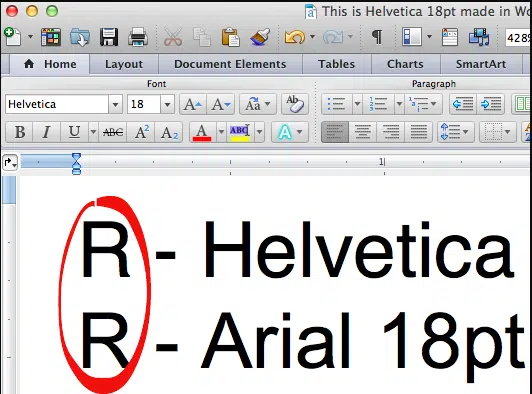
Now open the same document in Word for Windows and check out the capital R – they are the same even though there’s two different fonts. That’s because Windows has, without warning, replaced Helvetica with Arial on the displayed page.
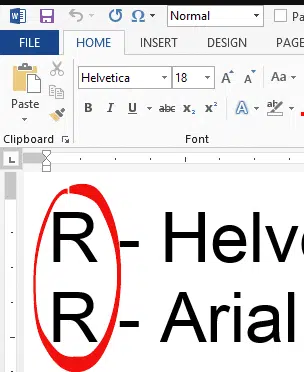
The font list shows you the font that’s set in the document but there’s no direct or obvious way to know that the named font isn’t the one being displayed or, for the most part, printed.
That might not seem like a big deal but it’s a massive difference for designers and can cause all sorts of formatting hassles.
The only way to know what’s going on is to dig down to Options | Advanced | Show document content | Font Substitution.
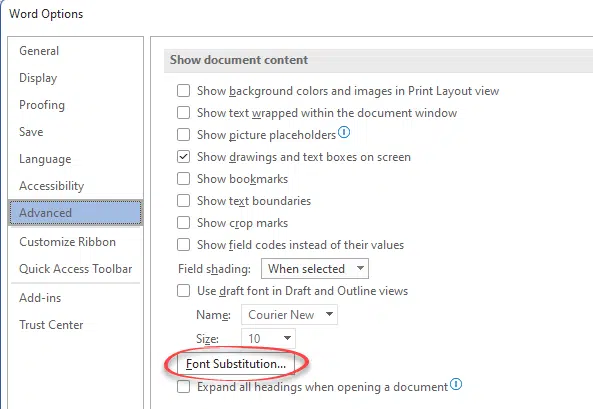
Even then, the substitution isn’t clear.
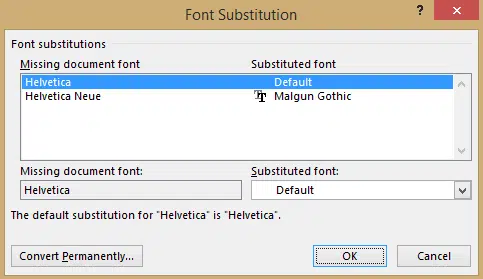
We can see that ‘Helvetica Neue’ is substituted with ‘Malgun Gothic’ – no problem there.
According to Word the substitution for ‘Helvetica’ is ‘Helvetica’ or ‘Default’ depending on which part of the dialog box you read! That doesn’t make any sense on several levels. In fact ,it’s quite wrong and misleading. It’s a sneaky way to substitute a popular font while obscuring the truth.
Of course, the wording should be:
The default substitution for ‘Helvetica’ is ‘Arial’
You can change the font substitution for an individual document on the Word dialog shown above by choosing another font.
The idea of font substitution is a good one. Alas, Microsoft’s implementation lacks transparency or clarity for anyone who needs the exact font used. It’s not too much to ask that users are told when and what font substitution is done.
Windows is setup to use Arial whenever it sees a reference to ‘Helvetica’. This happens at the Windows level and doesn’t just apply to Microsoft Office. Most web browsers get the same thing – web pages that ask for ‘Helvetica’ to display in web page will get the Arial font instead. It drives web designers crazy, especially since CSS has a way to choose from a family of preferred fonts.
Way down in the bowels of the Windows Registry is HCLM\SOFTWARE\Microsoft\Windows\NTCurrentVersion\FontSubstitutes which lists the substitutions.
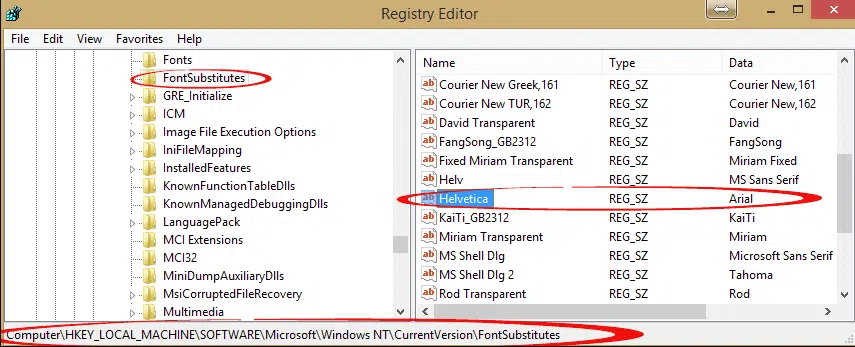
The registry has a list of font names and the font which Windows should deliver instead. The number after a comma is a specific Code Page. Some of those Windows entries are:
| Ask for this font | … | And you’ll get |
| Helv | MS Sans Serif | |
| Helvetica | Arial | |
| Times | Times New Roman | |
| Tms Rmn | MS Serif | |
| Arabic Transparent | Arabic – an Arabic language font | |
| Rod Transparent | Rod – a Hebrew font |
See Also
- Helvetica’s Godfather dies
- New Font picker, at last, coming to Word
- Why font selection is important for lawyers
- Sending a complete Word document – fonts and all
- Cloud fonts are a handy extra in Microsoft 365